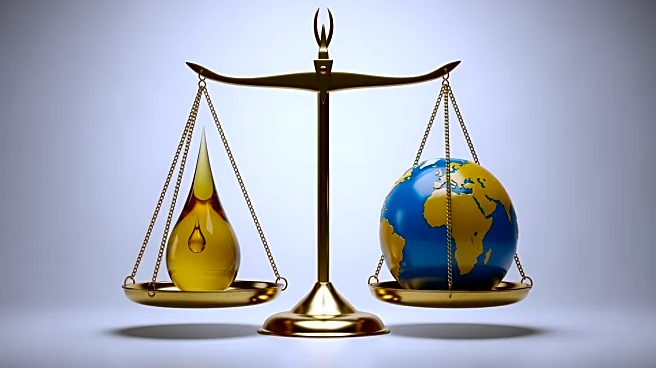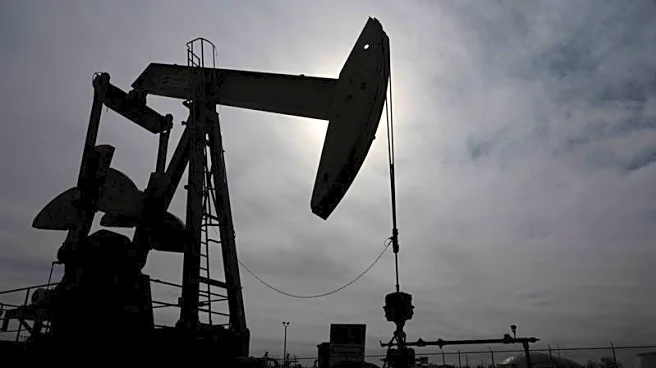What's Happening?
Gas prices in the United States are nearing the $3 mark for the first time in years, driven by a significant drop in crude oil prices. The national average price for a gallon of gasoline fell to $3.05
last week, influenced by lower gasoline demand and cheaper winter-blend gasoline, according to AAA. The last time the national average reached $3 per gallon was in May 2021. West Texas Intermediate futures are currently trading around $57 per barrel. Market fundamentals, including increased oil supply from OPEC+ and record domestic production levels, are contributing to the surplus in oil supply, which is expected to grow by 3 million barrels per day in 2025.
Why It's Important?
The decrease in gas prices is beneficial for consumers, as crude oil constitutes the largest portion of the cost of gasoline. Lower gas prices can lead to increased consumer spending in other areas, potentially boosting the economy. However, the surplus in oil supply may lead to reduced profitability for oil companies, which could impact their investment strategies and share buybacks. Additionally, geopolitical factors, such as President Trump's relationship with OPEC and reduced tensions in the Middle East, are influencing oil market dynamics.
What's Next?
Gasoline prices are expected to continue tracking lower crude oil prices, with projections indicating the U.S. average retail price for regular-grade gasoline to be around $3.10 per gallon for the remainder of the year and $2.90 per gallon in 2026. The ongoing surplus in oil supply may lead to further price reductions, while geopolitical developments could alter market conditions.
Beyond the Headlines
The current oil market dynamics highlight the complex interplay between global supply chains, geopolitical relationships, and domestic energy policies. The potential for further price reductions may lead to shifts in consumer behavior and energy consumption patterns, with long-term implications for environmental policies and energy sustainability.













